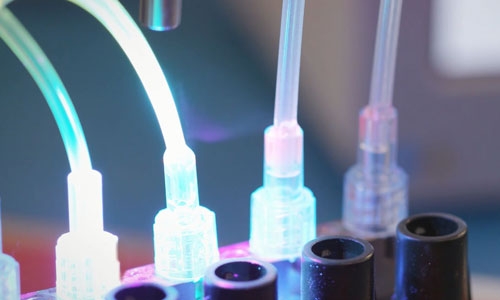P: Sale humo del adhesivo curable. ¿Qué es?
A: Antes de poder responder a esta pregunta, primero tenemos que entender qué no es. Por definición 1 , no es humo, ni vapores, ni desgasificaciones.
Lo que se ve salir del adhesivo de curado son humos generados por el proceso de fotocurado Este fenómeno es el resultado de una polimerización o reacción química muy rápida que ocurre cuando el adhesivo líquido se expone a la longitud de onda de luz correcta. En algunos casos, el calor emitido durante la reacción (a nivel molecular) y el calor de la absorción de energía de la luz pueden hacer que el adhesivo emita una pequeña cantidad de vapores antes de que el producto tenga la oportunidad de polimerizarse o curarse por completo.
Básicamente, este fenómeno puede emitir trazas de algunos de los ingredientes (o fracciones de los ingredientes) contenidos en la fórmula. Tenga en cuenta que la volatilización puede o no ser perceptible, pero casi siempre es una cantidad muy pequeña.
¿Son peligrosos los vapores? Siempre consulte la hoja de datos de seguridad del material para responder a esta pregunta. Sin embargo, si el líquido en sí mismo representa un riesgo para el usuario, las buenas prácticas de fabricación para el proceso en particular pueden sugerir la incorporación de un sistema de escape en el área de pegado para eliminar los vapores durante el paso de curado con luz.
Definiciones 1:
Vapor: Estado gaseoso de una sustancia que es sólida o líquida a las temperaturas y presiones a las que se encuentra. NIOSH (definición del Instituto Nacional de Seguridad y Salud Ocupacional)
Humo: Partícula de condensación sólida, generalmente de un metal vaporizado. Definición de NIOSH (Esto también podría generarse al curar los adhesivos Dymax)
Desgasificación: Liberación de gases absorbidos u ocluidos o de vapor de agua, generalmente mediante calentamiento en vacío. (Definición web)
Humo: Sistema vaporoso formado por pequeñas partículas de materia carbonosa en el aire, resultante principalmente de la quema de materia orgánica. (Definición web)

